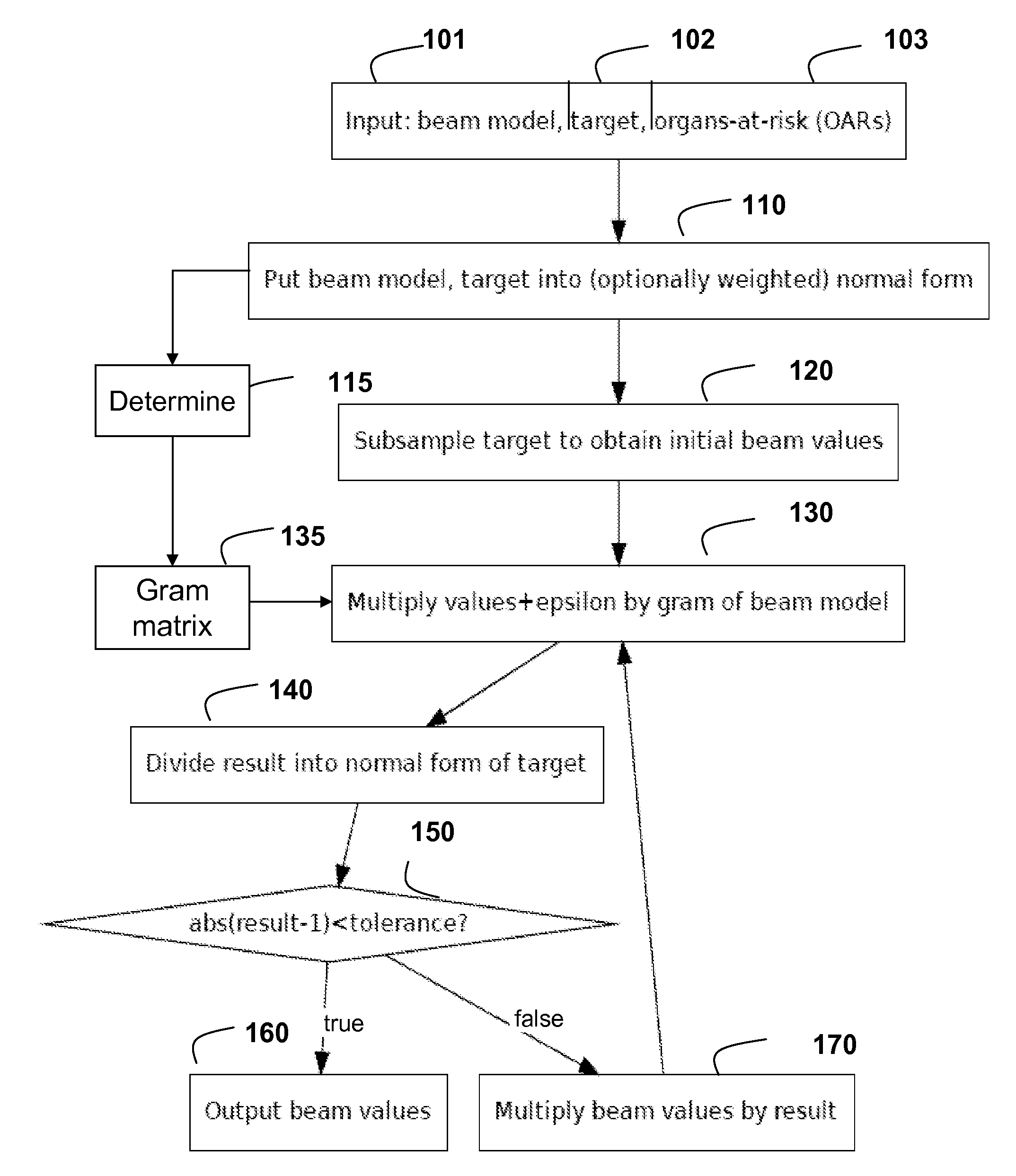Method for Optimization Radiotherapy Particle Beams
a radiotherapy particle beam and optimization technology, applied in the field of radiotherapy, can solve the problems of requiring hours to solve, limiting the number of variables and constraints, and the method currently being impractical for practical clinical problems with much larger sizes
- Summary
- Abstract
- Description
- Claims
- Application Information
AI Technical Summary
Problems solved by technology
Method used
Image
Examples
Embodiment Construction
[0014]The embodiments of the invention provides a considerably faster method that guarantee squared-error optimality and non-negative weights for radiotherapy particle beams.
[0015]For “pencil beam” treatment, there are roughly n˜106 voxels, and m˜104 V beams. Consequently, the compute time is determined mostly by the number of voxels, and it is desirable to reformulate the problem in a way that minimizes voxel-based calculations. The steps of the method can be performed in a processor connected to a memory and input / output interfaces as known in the art.
[0016]As shown in FIG. 1, input to the method includes a beam model 101, a target dose 102, and locations of organs at risk (OAR) 103.
[0017]The first step 110 determines a normalized model and a normalized target dose.
[0018]A Gram matrix Q={dot over (=)}ATAεm×m 135 of the beam model is determine 115 beforehand, where T is the transpose operator. Then, the same transform is applied to the target dose to obtain h{dot over (=)}ATbεm. Th...
PUM
 Login to View More
Login to View More Abstract
Description
Claims
Application Information
 Login to View More
Login to View More - R&D
- Intellectual Property
- Life Sciences
- Materials
- Tech Scout
- Unparalleled Data Quality
- Higher Quality Content
- 60% Fewer Hallucinations
Browse by: Latest US Patents, China's latest patents, Technical Efficacy Thesaurus, Application Domain, Technology Topic, Popular Technical Reports.
© 2025 PatSnap. All rights reserved.Legal|Privacy policy|Modern Slavery Act Transparency Statement|Sitemap|About US| Contact US: help@patsnap.com



